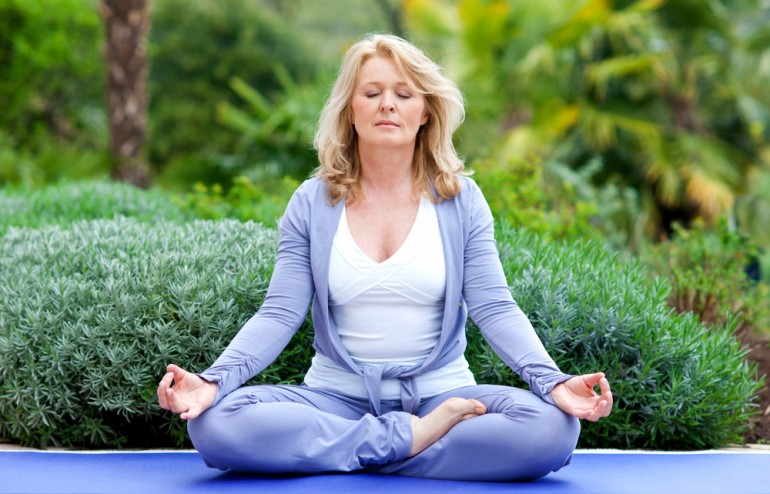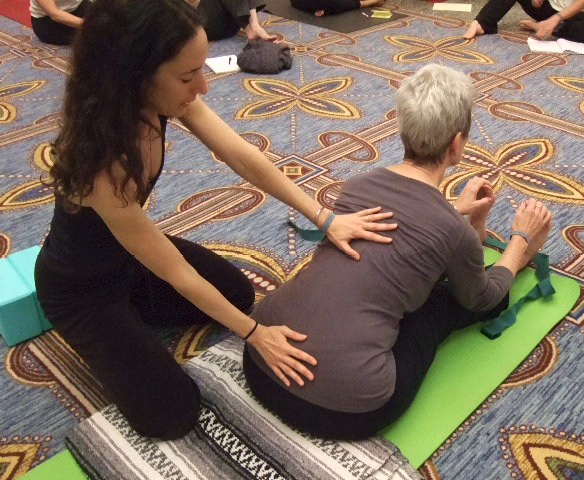
Do you want to do yoga but don’t know where to begin? Here are 7 clever tactics to get you started in yoga after menopause.
I’m now forty-nine and already three years into menopause and my yoga practice has done wonders for my overall conditioning. But things are beginning to change. Improved flexibility and strength count among the many benefits of yoga for women in midlife and beyond. I’ve been physically active my entire life but natural wear and tear of the joints, loss of flexibility and osteoarthritis are some of the age-related issues we encounter practicing yoga into our menopause years. With yoga’s growing popularity among all age groups, here are seven ways to keep your practice safe and sustainable.
Competition leads to injury. Do what feels right for you.
• Choose a class level that’s right for you. Trending now are “mixed” or “all-levels” classes. Though open to all, they don’t often cater to mature students with detailed instruction or modifications of poses. Choose a class corresponding to your level of
experience. Beginners or gentle yoga is a great starting point.
• Pick your style. Iyengar, Integral, classical Hatha and Kundalini are well-rounded styles of yoga popular among mature practitioners. Faster-paced styles – vinyasa and Ashtanga – are physically demanding, drawing a younger set.
• Work on the basics. As with other fitness regimes, take time to learn correct alignment for common positions — important for safety and injury prevention. Examples are basic standing poses (Mountain, Warrior, Triangle Pose), simple back bends (Cobra, Bridge Pose), and forward bends which stretch the back body (Seated Forward Bend, Cobbler’s Pose). Challenging weight-bearing positions (Plank Pose, Downward Dog, Dolphin Pose) also need attention to detail and correct form.
• Work at your own pace. Yoga isn’t meant to be competitive, but you’ll still see other students pushing themselves to the max. Competition leads to injury. Do what feels right for you.
 • Don’t push through pain. As your practice advances, you’ll eventually notice the difference between intense feeling or sensation and actual pain. Never push through pain or ignore a nagging injury.
• Don’t push through pain. As your practice advances, you’ll eventually notice the difference between intense feeling or sensation and actual pain. Never push through pain or ignore a nagging injury.
• Look for an experienced teacher. Renowned yoga instructor Sandra Sommerfield-Kozak once said that the best teachers are those who’ve got some life experience and have even “broken down” a bit. Mature, experienced teachers tend to be more familiar with injuries, contraindications and the unique needs of older students.
• Celebrate progress. Knowing that our bodies are changing (and inconsistent) as we get older, savor your breath, freedom of movement and any progress – however large or small.





